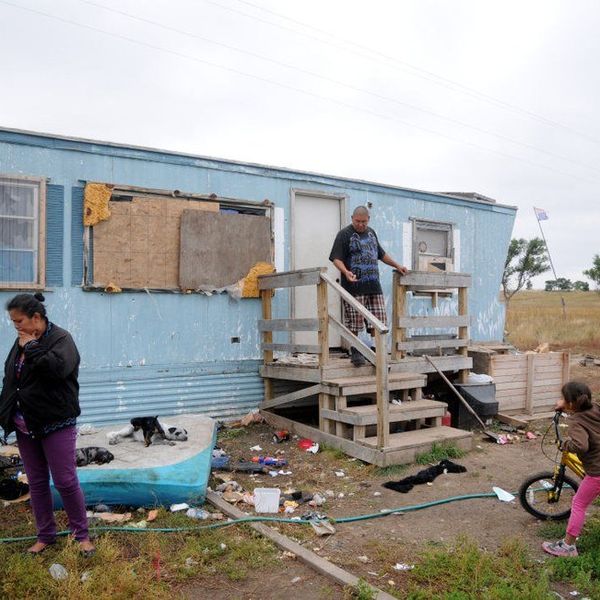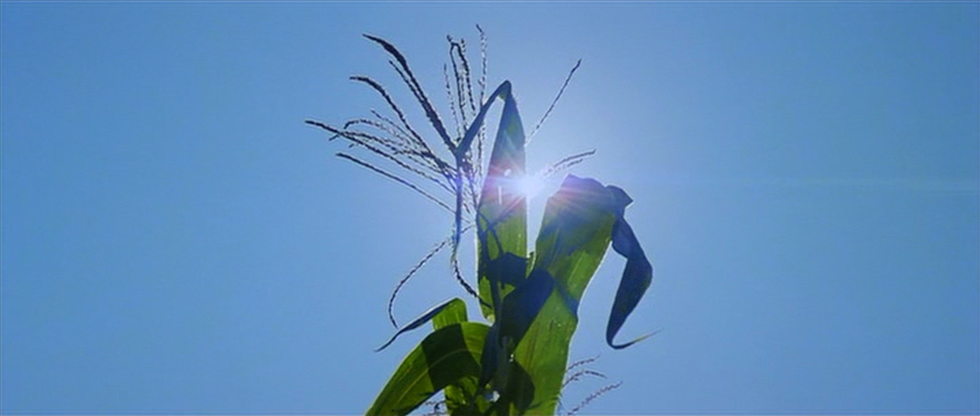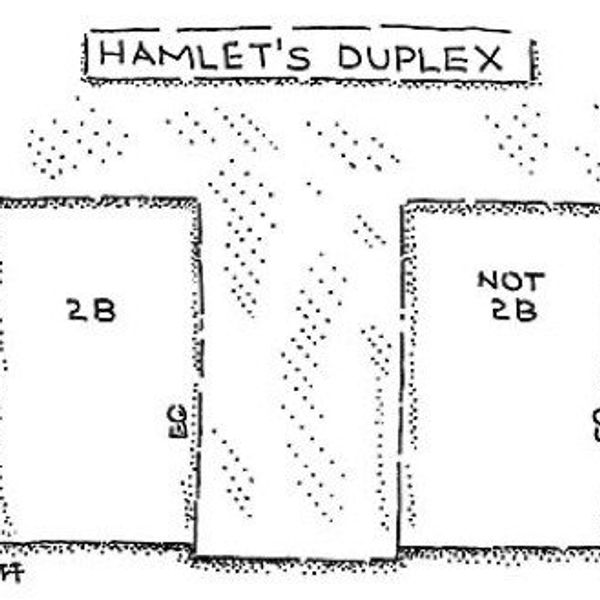However daunting the task, it is still a possibility that the language spoken by Pocahontas could have new speakers in years after the publication of this article. Although it is classified as the Virginia Algonquian language, for simplicity's sake in this article I have decided to condense it to its commonly used name--Powhatan; which comes from the name of the chief who ruled over the tribal confederacy that dealt with the English settlers. There were and continues to be attempts to reconstruct the language 200 years later. The important names that are involved in Powhatan language revitalization are Frank Siebert, Helen Rountree, and Blair Rudes. They are the linguists whose contributions could shape the rebirth of the Powhatan language. Although, the information is unreliable, despite having 650 total Powhatan words, what are available are indications as to how the language may have been used.
As for the people who spoke it, this problem goes back to the European colonization of the Americas. Intended on finding the Northwest passage to the Pacific, English explorers settled in James River and established the Jamestown settlement in 1607. They started to learn the Powhatan language since the newcomers were dependent on them. As the number of English colonists increased, the reverse happened, as the Powhatan Nation needed to speak English for trade goods. By 1800, the language was no longer spoken. As a result of European encroachment, while the nations within the confederacy stayed, some of the Powhatan Nation migrated to modern-day New Jersey and settled alongside the Lenape Nation. From 1983-2011, their reservation was located on Rankokus State Park, before it fell to disrepair and the nation were forced to leave.
Although they have yet to have a reservation to call their own, they still hold claim to bits of their language. A lot of the hints are in plain sight within the place-names in Virginia (or what the Powhatans called "Tsenacomoco"). A lot of them were Anglicized from the Powhatan names, such as Appomatox (originally "Appomattuck"), Pamunkey, Mattaponi (originally "Mattapanient"), Accomac, and Chesapeake. Blair Rudes, an Associate Professor of the University of North Carolina, actually dispelled the widely believed etymology of Chesapeake, meaning "Great Shellfish Bay," and accurately stated it meant "Great Water." As for botany and cuisine, there are suggestions that they were used for specific purposes, which are also clues in their meanings. The Powhatan nobility, for instance, enjoyed walnut milk as a delicacy, which was recorded as powcohicora. Another word, wisakon, was used to refer to medicine in general as well as English spices and liquors that were considered "medicinal-tasting." These are just ways of providing evidence to the etymologies of the originally documented words.
However, there are some words that are lost in translation and have yet to be deciphered. An example is the Powhatan Nations' religion prior to the spread of Christianity. They worshipped a god named Okeus as well as lesser gods called kwiokosuk (kwiokos in singular). Deduction of those meanings are difficult because of the lack of understanding of the prefixes and suffixes that may have been used; as well as the correct spelling of Okeus, which had varying spellings in different parts of eastern Virginia, such as Oke, Okee, Okeus, Quioccos, Cakeres, and Quiquascacke. Though, Frank Siebert, a linguist who attempted to reconstruct the Powhatan language in 1975, did forewarn that there may have been dialects and these spellings just may be examples. However, Rudes did prepare to fill in any gaps in the language in his project. When he could not find a word or phrase recorded by Smith or Strachey, he tried to put together each word from three languages related to Powhatan. If there were at least two similar words, then those words would be used. The words as well as the grammatical rules indicating "he, I, they, etc.," that were not noted in the original words, were borrowed from those languages.
Although, the Powhatan Nation did not record the words, archaeology does provide an in-sight into their daily lives and might make the connections to the recorded words more potent. On the very site of where the village Werowocomoco once stood, a husband-and-wife team own it and allow archaeologists and members of the Pamunkey, Chickahominy, Nansemond, Mattaponi, Rappahannock, and Monacan nations to do excavations for research purposes. There are a lot of well-preserved artifacts found in that site; including ceramics that were tempered with crushed shell and pressed on fabric textures, stone arrowheads, and stains in the soil that belonged to posts used to maintain houses made from wooden saplings. The word for those houses, yi-hakan, was described by John Clayton, a minister in Jamestown, as being like a garden. Working for his PhD, Erret H. Callahan, Jr. reconstructed what this type of house may have looked like and ended up succeeded with red maple, black locust, red cedar, and yellow pine saplings. While archaeology would work hand-in-hand with the written records, it also seeks to correct the original vocabulary, since it turned out that the word for grass used along with straw and tree-bark to make baskets, pemmenaw, actually meant "rope" or "thread," according to Siebert.
The names that are given credit for actually documenting the vocabulary but are treated with skepticism are: John Smith, William Strachey, John Clayton, and the other Jamestown people who recorded the Powhatan way of living. Not only did Strachey and Smith use the English language alphabet to roughly transcribe the language, they often incorrectly interpreted the words, with pemmenaw being an example. What muddied the transcription the most was that both men were not, by modern standards, educated in the field of ethnography. Smith was of yeoman class and Strachey was more familiar with the literary arts (who was also a close friend of William Shakespeare). The lack of trust also comes from the incredible bias on behalf of the colonists who regarded the Powhatan Nation as uncultured and barbaric.
A notable example of misinformation was the way the Powhatan Nation would "kill" their youth. As John Smith told, he was about to endure such a similar execution before he was famously rescued by the Chief's daughter, Pocahontas. As it turned out, neither events happened. What was meant by "killing" the youth was a ceremony called huskanaw, which involved a rite of passage for transitioning Powhatan boys into manhood by beating them with bundles of reeds. In John Smith's case, this may have happened in order for him to be "reborn" as a tribal member. Also, Pocahontas, who's real name was Matoaka, was 10 years old at the time this would have taken place. John Smith was also notorious for his arrogance by the fellow colonists, which makes his accounts more illegitimate. When that part of John Smith's captivity is proven untrue, then other documentations are also susceptible.
In the case of William Strachey, he acquired the main bulk of the original Powhatan vocabulary records by using his status as colonial secretary of the Jamestown fort to hold an interview with two Indian men named Kemps and Machumps. However, Siebert identified 263 "real" Powhatan words out of his list, because Strachey was as limited as Smith, in terms of writing out the words using 17th century English pronunciation. He also sensationalized his own account in the Virginia colony in order to outshine John Smith's own embellished account.
Overlooking the mistakes made by the original transcribers, there are methods of restructuring the language. Helen Rountree, the author of "The Powhatan Nation of Virginia: Their Traditional Culture," suggested comparing the Powhatan language to the ones spoken by nations in the New England coast, since they belonged to the same Algonquian language family tree. For Terrence Malick's film "The New World," Rudes followed Rountree's advice when reconstructing the Powhatan language for the dialogue.
It was a 2005 film depicting a more realistic depiction of Pocahontas, John Smith, John Rolfe, and Jamestown; with one crucial element of realism being the Powhatan language itself (though there were fictional moments in the film, including the rescue of John Smith by Pocahontas). This assignment by Terrence Malick was so difficult, to quote David A. Fahrenthold, a Washington Post Staff Writer, it was "like trying to rebuild modern Spanish using only a few pages from a tourist phrasebook, plus Italian." It was an interesting metaphor to use, considering how Spanish, Italian, and other Romance languages are also sister-languages, with an example being the word friend in Spanish (amigo), French (ami), and Italian (amico).
The related words in Powhatan's sister-languages definitely provide important hints as to how the vocabulary was pronounced. While other Algonquian languages use the letter "l," the Powhatan vocabulary was written with an "r." They also did not use the combination of consonants nor did they use the sounds [b], [d], [f], [g], [j], [ng], [th], [v], or [z]. While there is no recorded evidence for the common ancestor of the Algonquian languages, there are hypothetical words that share similarities to the same words in the related languages in what is called a proto-language. While the Powhatan word for sky was recorded as arrokoth, Rudes compared this to the Proto-Algonquian word a-lahkwatwi, which actually derives from the words for "cloud." Since the recorded word had an "r" in it, he deduced that the reformed word is arahqat. This is important for finding similar written words that have an accurate meaning. It turned out that the word wisakon has related words in the Algonquian languages meaning "bitter." In Rudes' month-long analysis of the Powhatan vocabulary, aamowk, the word for "angle," has related words in Natick (aumauog: "they fish"), Narragansett (aumaui: "he is fishing"), and Old Delaware (a-man: "fishhook"). He deduced that the reformed Powhatan word would be amewak. It is also important to note that the Carolina Algonquians referred to their god as Kiwasa, which might sound similar to the Powhatan Okeus mentioned earlier.
Another method of reviving the Powhatan language would be to look at related examples. One example is the reviving of the Cornish language, which is indigenous to the province of Cornwall in the southernmost part of the British Isle. As England started imposing its linguistic hegemony on the Cornish people, they started to lose their language. Its last written record was a letter written in 1776 by William Bodiner, who was not a native speaker but learned it from fishermen. From 1904 onwards, there were attempts at transcribing the language and reviving it. As it went, research lead to evening classes which lead to Cornish-language books and magazines. Just like the Powhatan language, the revived Cornish language had to borrow words from its sister-languages; in which case, the scholars borrowed grammar and vocabulary from Breton and Welsh, which belonged to the same Celtic language family. Another similarity is the propagating the revived language though popular media.
However, it is foreseeable that there will be controversy as to the standard writing convention of the reformed Powhatan. Cornish had four ways of writing, all based on updates. Eventually the Standard Written Form (SWF) was agreed upon to be the main way of writing. It would appear intimidating to any new speaker as to which way of writing they should use. Just like in this language community's case, there needs to be unity in terms of how the Powhatan words are written. The ideal alphabet would reflect off every vowel, consonant, and accent, just as Rountree attempted to do by building upon Siebert's reconstruction.
Working amongst fellow linguists is crucial for maintaining the reconstruction of a dead language like Powhatan. There continued to be efforts to bring back the Powhatan language, eventually culminating to the release of "The New World." However, language revitalization did not end with that film, rather it accelerated it. As soon as the film was released, Rudes gave the results of his research to the Virginia Indian nations for their language revitalization efforts. Then, he worked with Rountree in constructing a Powhatan language dictionary before he passed away in 2008. It would especially help the reconstruction upon looking at the background of the linguists involved. In Rudes' case, he was already involved in reconstructing the Pequot language prior to being hired by Terrence Malick; while Rountree is an ethno-historian specialized in anthropology.
It may appear that the return of the Powhatan language would be limited to the Powhatan Indian community; but I would argue that its funding and research should be national obligations, since bringing back the Powhatan language is just as important as the Wampanoag language, spoken by the Massachusetts nation who feasted with the Pilgrims in 1621 and established Thanksgiving Day. Both were spoken by two Native American nations who played an incredibly crucial role in the making of the United States of America before there was even such a geopolitical entity. It would make Americans appreciate the fact that the colonists' survival were dependent on the indigenous population, especially when it came to scavenging for food. Indeed, words from this language have been borrowed into the English language, such as "opossum" and "raccoon;" just like how "moccasin" was borrowed from Wampanoag.
It can be possible to reconstruct the Powhatan language, but it wouldn't be the exact same language it may have been hundreds of years ago (mainly because we do not exactly know how the language was used back then). Then again, I'm convinced that to bring back the Powhatan language is to put a lot of emphasis on archaeological breakthroughs, since they are needed in uncovering Powhatan Indian society. "The New World" might also become a historical artifact, in examining the history behind the bringing a dead language to famous directors and actors and their wide audience. As for the scant, written records of the Powhatan vocabulary, they are reliant as clues and hints as to what constituted a language that had its own variance of pronunciations and grammar within the Algonquian language family tree. They created a paradox where they are regarded with extreme skepticism and yet are the center of Powhatan language revitalization, but they are crucial for the restoration of that language-speaking community in the State of Tsenacomoco.





















